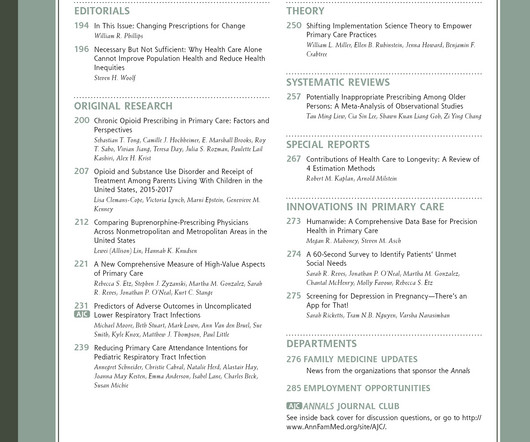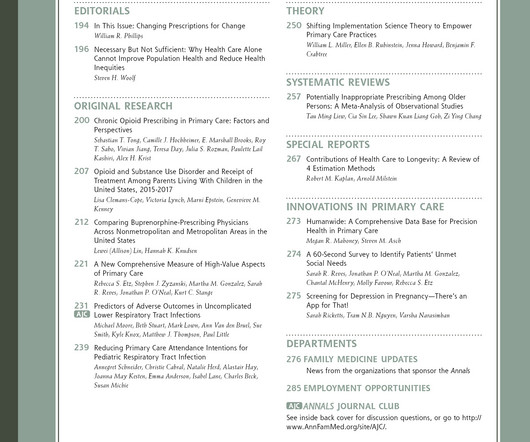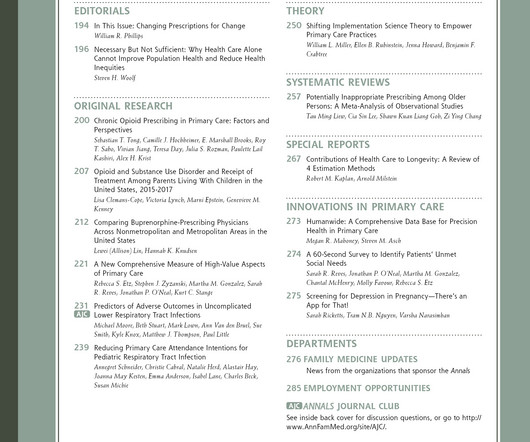Relationship between Social Risks and Colorectal Cancer Screening/Surveillance in a Large US Health System [Social determinants and vulnerable populations]
Annals of Family Medicine
NOVEMBER 20, 2024
Implementation of electronic health record SDOH questionnaires is more common in health care institutions and allows for individual-level assessment of social risk in a primary care setting. Context Social determinants of health (SDOH) such as access to care and economic stability negatively impact colorectal cancer (CRC) screening rates.











Let's personalize your content